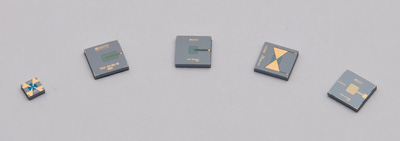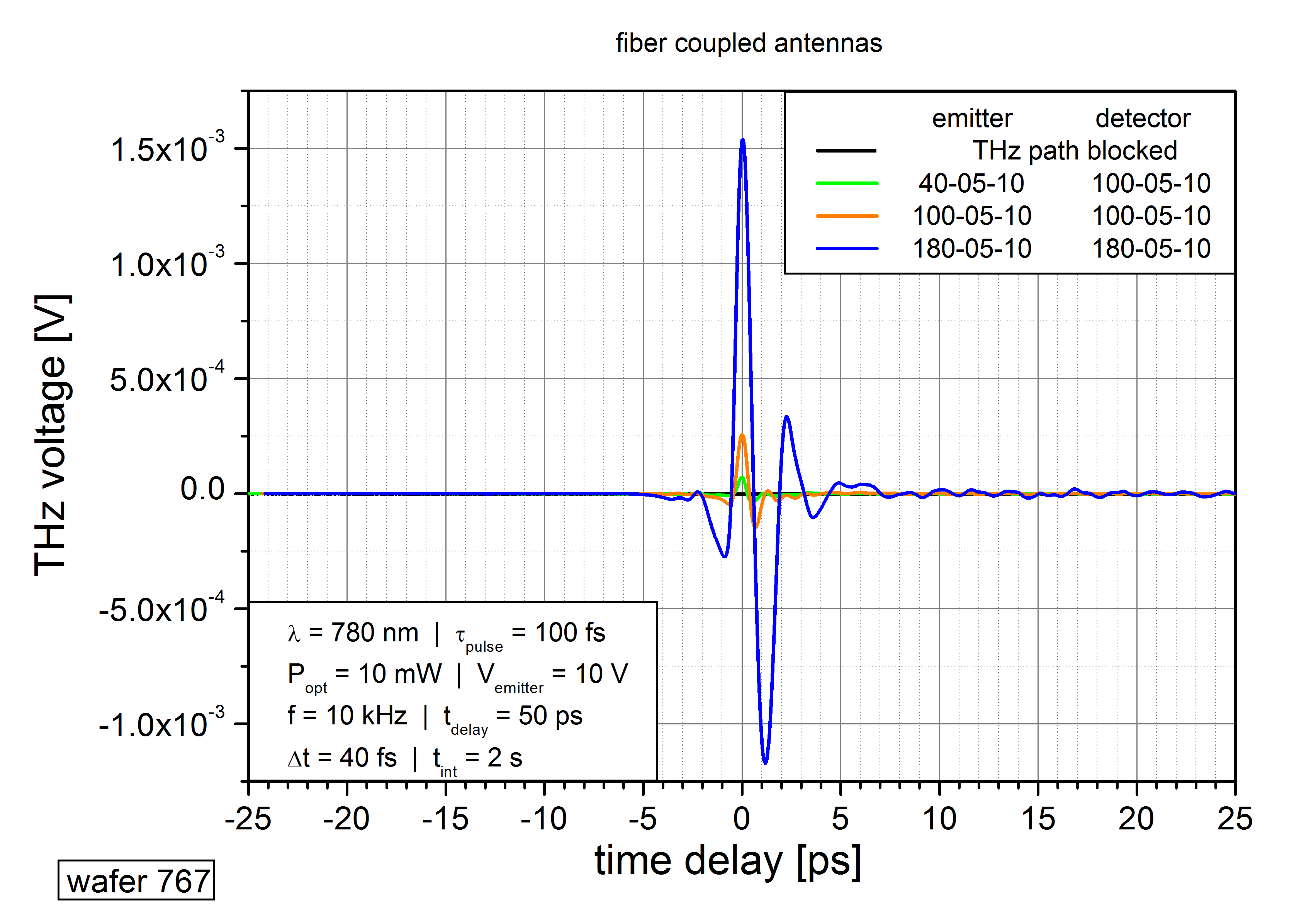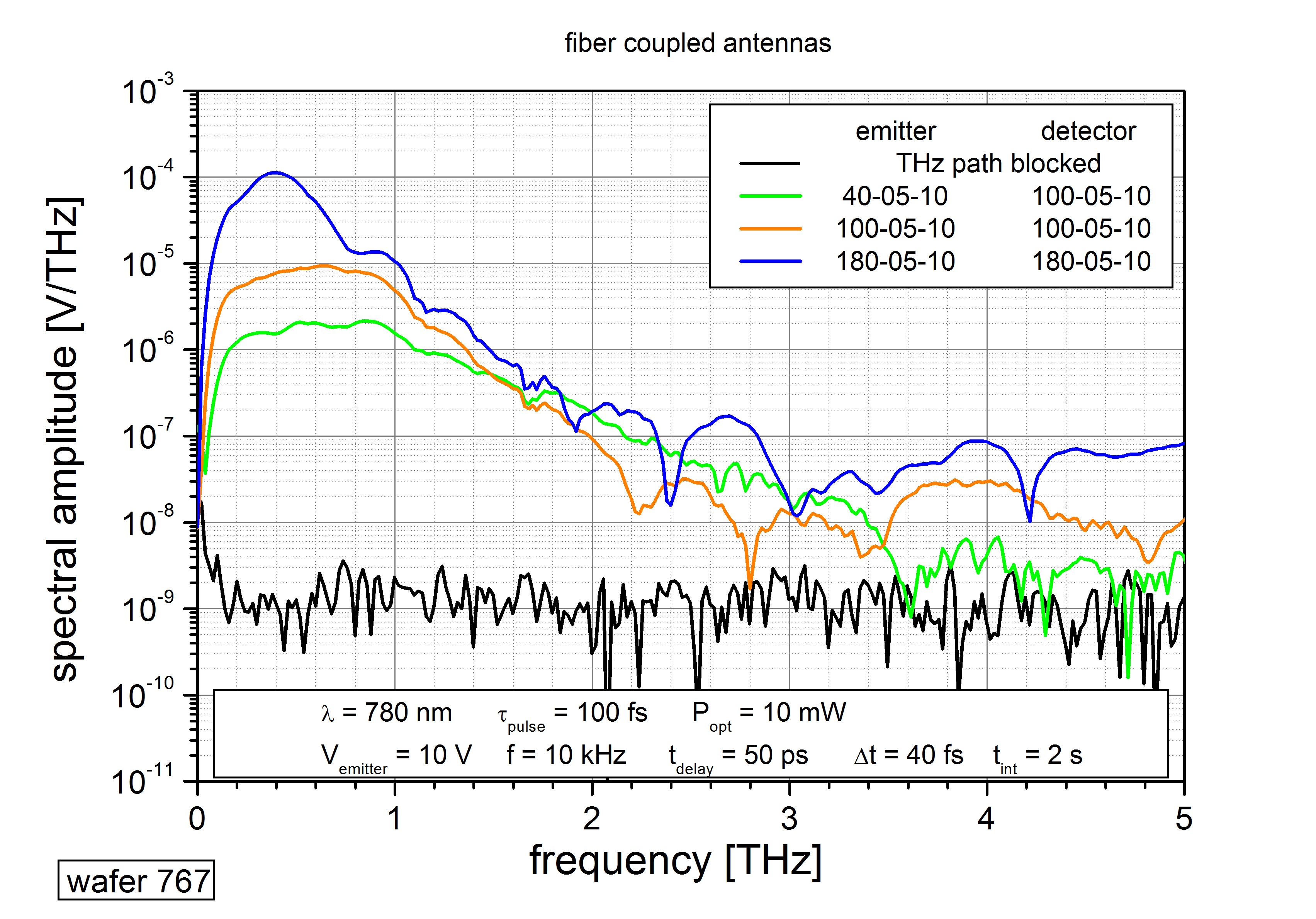We provide PCAs for three laser wavelengths
PCA as THz transmitter and receiver
- A photoconductive antenna, consisting of a low temperature grown GaAs or InGaAs
film covered with metallic contacts can be used as an optical excited broadband
terahertz transmitter or receiver for time domain measurements or as photomixer. Typically an alternating voltage
is supplied to the electrical contacts of the transmitter antenna to allow a lock-in measurement. There are at least
two important antenna parameters: the length l and the gap distance g.
The antenna length l determines the preferred frequency at the
resonance condition.
The antenna gap distance g between the metallic contacts must be illuminated with a laser spot.
- The PCA can be accomplished with a hyperhemispherical or elliptic silicon
substrate lens for THz beam shaping.
- To allow flexible THz transmission or reflection measurements we offer optical fiber coupled antennas.
Selection of an appropriate PCA
- Laser wavelength λ:
The best performance show antennas with LT-GaAs absorber layer for ~ 800 nm (or shorter) laser wavelength because of
their high dark resistance and short relaxation time < 1 ps.
- Antenna length l:
A short antenna length l ≤ 100 µm ensures a large THz bandwidth on the costs of a reduced signal amplitude at
low frequencies < 1 THz.
- Emitter / detector combination:
A good compromise between bandwidth and signal amplitude is the use of a short emitter antenna in combination with a somewhat longer
detector antenna. An appropriate combination is the antenna PCA-40-05-10 as emitter with the antenna PCA-100-05-10 as detector.
A larger detector antenna allows collecting the focused THz signal also if the numerical aperture (NA) of the THz optics
is substantial lower then 1 or there exists some misalignment or aberration of the THz optics.
- High THz power with iPCA™:
The typical conversion efficiency of pulsed laser power into THz power of a PCA is ~ 10-4. Therefore a short dipole antenna
emits an average THz power of ~ 1 µW when illuminated with 10 mW.
If more average optical power is available at 800 nm wavelength then an iPCA™ - large area interdigital Photoconductive Antenna -
can be used as emitter or detector to increase the signal amplitude.
- Antenna for photomixing:
Because of the nonlinear behavior of a PCA cw photomixing using two laser beams with different frequencies but equal amplitude and polarization
is possible for THz generation and detection. The conversion efficiency of photomixing is more then one order of magnitude lower then for
pulsed laser excitation. Therefore photomixing can be used only for frequencies < 1 THz. To get a larger signal in this low frequency region
a PCA with a longer dipole ( > 100 µm) shall be used.
Performance comparison of fiber coupled antenna combinations
Performance comparison of free-space antenna combinations






